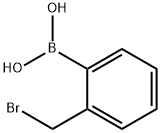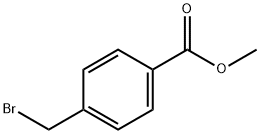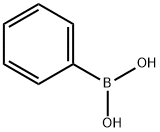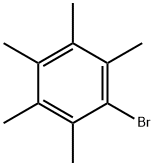2-Bromomethylphenylboronic acid
Synonym(s):α-Bromo-o-tolueneboronic acid;o-Boronobenzyl bromide
- CAS NO.:91983-14-1
- Empirical Formula: C7H8BBrO2
- Molecular Weight: 214.85
- MDL number: MFCD01318941
- EINECS: 626-180-6
- SAFETY DATA SHEET (SDS)
- Update Date: 2023-04-23 13:52:06

What is 2-Bromomethylphenylboronic acid?
The Uses of 2-Bromomethylphenylboronic acid
suzuki reaction
The Uses of 2-Bromomethylphenylboronic acid
Reactant involved in:
- Studies of carbon-boron bond cleavage of phenylboronate-pendant cyclen
- Development of a sensory system to detect glucose or other monosaccharides and hydroxycarboxylates
- Synthesis of boronated triaryl and tetraaryl phosphonium salts used in cytotoxicity studies
- Colorimetry and fluorometry mercury determination with chemosensors composed of rhodamine and boronic acid groups
- Synthesis of imidazolium-containing boronic acids used as fluoride ion sensors
- Reactions with adenine for molecules with antiinflammatory antitumor activities?
What are the applications of Application
2-(Bromomethyl)phenylboronic acid is a reactant involved in studies of carbon-boron bond cleavage of phenylboronate-pendant cyclen
Synthesis Reference(s)
Journal of the American Chemical Society, 80, p. 835, 1958 DOI: 10.1021/ja01537a021
General Description
May contain varying amounts of anhydride.
Properties of 2-Bromomethylphenylboronic acid
| Melting point: | 158-162 °C |
| Boiling point: | 358.5±44.0 °C(Predicted) |
| Density | 1.57±0.1 g/cm3(Predicted) |
| storage temp. | 2-8°C |
| pka | 8.44±0.58(Predicted) |
| color | Faint orange |
| CAS DataBase Reference | 91983-14-1(CAS DataBase Reference) |
Safety information for 2-Bromomethylphenylboronic acid
| Signal word | Warning |
| Pictogram(s) |
 Exclamation Mark Irritant GHS07 |
| GHS Hazard Statements |
H315:Skin corrosion/irritation H319:Serious eye damage/eye irritation H335:Specific target organ toxicity, single exposure;Respiratory tract irritation |
| Precautionary Statement Codes |
P261:Avoid breathing dust/fume/gas/mist/vapours/spray. P264:Wash hands thoroughly after handling. P264:Wash skin thouroughly after handling. P271:Use only outdoors or in a well-ventilated area. P280:Wear protective gloves/protective clothing/eye protection/face protection. P302+P352:IF ON SKIN: wash with plenty of soap and water. P305+P351+P338:IF IN EYES: Rinse cautiously with water for several minutes. Remove contact lenses, if present and easy to do. Continuerinsing. |
Computed Descriptors for 2-Bromomethylphenylboronic acid
| InChIKey | MYVJCOQGXCONPE-UHFFFAOYSA-N |
New Products
Tert-butyl bis(2-chloroethyl)carbamate 4-Methylphenylacetic acid N-Boc-D-alaninol N-BOC-D/L-ALANINOL 3-Morpholino-1-(4-nitrophenyl)-5,6-dihydropyridin- 2(1H)-one Furan-2,5-Dicarboxylic Acid Tropic acid 1,1’-CARBONYLDIIMIDAZOLE DIETHYL AMINOMALONATE HYDROCHLORIDE R-2-BENZYLOXY PROPIONIC ACID 1,1’-CARBONYLDI (1,2-4 TRIAZOLE) N-METHYL INDAZOLE-3-CARBOXYLIC ACID (2-Hydroxyphenyl)acetonitrile 4-Bromopyrazole 5-BROMO-2CYANO PYRIDINE 5,6-Dimethoxyindanone 5-broMo-2-chloro-N-cyclopentylpyriMidin-4-aMine 2-(Cyanocyclohexyl)acetic acid 4-methoxy-3,5-dinitropyridine 2-aminopropyl benzoate hydrochloride 1-(4-(aminomethyl)benzyl)urea hydrochloride diethyl 2-(2-((tertbutoxycarbonyl)amino) ethyl)malonate tert-butyl 4- (ureidomethyl)benzylcarbamate Ethyl-2-chloro((4-methoxyphenyl)hydrazono)acetateRelated products of tetrahydrofuran








You may like
-
 2-(Bromomethyl)phenylboronic Acid (contains varying amounts of Anhydride) CAS 91983-14-1View Details
2-(Bromomethyl)phenylboronic Acid (contains varying amounts of Anhydride) CAS 91983-14-1View Details
91983-14-1 -
 2-(Bromomethyl)phenylboronic acid CAS 91983-14-1View Details
2-(Bromomethyl)phenylboronic acid CAS 91983-14-1View Details
91983-14-1 -
 1975-50-4 98%View Details
1975-50-4 98%View Details
1975-50-4 -
 2-HYDROXY BENZYL ALCOHOL 98%View Details
2-HYDROXY BENZYL ALCOHOL 98%View Details
90-01-7 -
 2-Chloro-1,3-Bis(Dimethylamino)Trimethinium Hexafluorophosphate 221615-75-4 98%View Details
2-Chloro-1,3-Bis(Dimethylamino)Trimethinium Hexafluorophosphate 221615-75-4 98%View Details
221615-75-4 -
 14714-50-2 (2-Hydroxyphenyl)acetonitrile 98+View Details
14714-50-2 (2-Hydroxyphenyl)acetonitrile 98+View Details
14714-50-2 -
 118753-70-1 98+View Details
118753-70-1 98+View Details
118753-70-1 -
 733039-20-8 5-broMo-2-chloro-N-cyclopentylpyriMidin-4-aMine 98+View Details
733039-20-8 5-broMo-2-chloro-N-cyclopentylpyriMidin-4-aMine 98+View Details
733039-20-8
Statement: All products displayed on this website are only used for non medical purposes such as industrial applications or scientific research, and cannot be used for clinical diagnosis or treatment of humans or animals. They are not medicinal or edible.